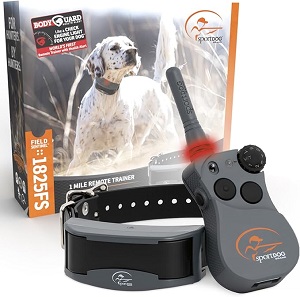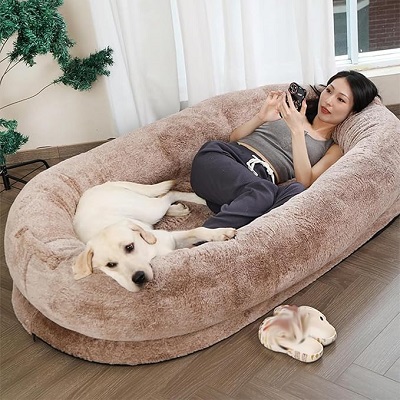
How to Stop Your Dog from Eating Too Fast
How to Stop Your Dog from Eating Too Fast: Tips and Solutions
Introduction
Does your dog devour its meals within seconds, barely stopping to chew While it might seem amusing or harmless at first, eating too fast can lead to a range of health problems for your dog. From choking hazards to digestive issues and even life-threatening conditions like bloat, gulping down food is a behavior that needs to be addressed. In this article, we’ll explore the reasons why dogs eat too quickly and provide effective methods to help them slow down, ensuring a safer and healthier mealtime experience.
1. Why Do Dogs Eat Too Fast
Instinctual Behavior
Dogs are descendants of wild animals, where competition for food was fierce. In the wild, wolves and other canines had to eat quickly to secure their share of food before other pack members or scavengers arrived. This instinct can still be present in domesticated dogs, especially if they feel that food is a scarce resource.
Resource Guarding
Some dogs may eat too fast because they fear their food will be taken away, even if no one is threatening to do so. This is more common in multi-dog households or if a dog has experienced food scarcity in the past, such as in rescue situations.
Excitement or Anxiety
Eating fast can also be a result of excitement or anxiety. Some dogs are so excited by mealtime that they can’t control their urge to gobble up everything as fast as possible. Alternatively, a nervous dog might feel the need to finish eating quickly in order to alleviate anxiety.
Essentials for Your Newly Adopted Pet
Welcoming a shelter pet into your life is a beautiful journey. Here are some handpicked items to help your new friend feel safe, loved, and right at home:
Medical Reasons
In some cases, fast eating may be linked to medical issues such as gastrointestinal problems or malnutrition. Dogs that are constantly hungry due to a medical condition, such as diabetes or parasites, may eat quickly in an attempt to satisfy their hunger.
2. The Risks of Eating Too Fast
Choking
When a dog eats too fast, it doesn’t take the time to properly chew its food. This increases the risk of choking, as large pieces of food can get stuck in the throat.
Vomiting and Regurgitation
Eating quickly often results in your dog swallowing excessive air, which can cause them to vomit or regurgitate their food. Not only is this unpleasant for both you and your dog, but repeated episodes of vomiting can irritate their esophagus and stomach.
Bloat (Gastric Dilatation-Volvulus, or GDV)
Bloat is a life-threatening condition where the stomach fills with gas and twists on itself. Fast eating is one of the contributing factors to this condition, as dogs that gulp down food also tend to swallow large amounts of air. Deep-chested dogs are especially at risk for bloat, making it crucial to control their eating speed.
Digestive Problems
When food is eaten too quickly, it’s not properly chewed or broken down, which can lead to digestive issues like indigestion, gas, and discomfort. Slowing down your dog’s eating can help improve digestion and nutrient absorption.
3. Solutions to Slow Down Your Dog’s Eating
Use a Slow Feeder Bowl
Slow feeder bowls are designed with ridges or obstacles that force your dog to eat around them, slowing down the speed at which they can access their food. These bowls are effective in preventing your dog from gobbling up large amounts of food at once and can be easily purchased online or at pet stores. They come in a variety of shapes, sizes, and difficulty levels, depending on your dog’s needs.
Try Puzzle Feeders or Treat-Dispensing Toys
Another great option for slowing down your dog’s eating is to use a puzzle feeder or treat-dispensing toy. These interactive feeding tools require your dog to solve a puzzle or manipulate a toy to get the food out. Not only do they slow down eating, but they also provide mental stimulation, keeping your dog engaged and entertained during mealtime.
Divide Meals into Smaller Portions
Instead of feeding your dog one large meal, divide their daily food into smaller, more frequent portions throughout the day. This can reduce their urge to eat too quickly, as they know more food is coming soon. For example, if you usually feed your dog twice a day, consider splitting the food into three or four smaller meals instead.
Spread Food Over a Large Area
If you don’t have a slow feeder or puzzle toy handy, you can spread your dog’s food over a large surface area, such as a flat baking tray or even the floor. By scattering the food, your dog will be forced to move around and pick up pieces individually, which naturally slows down their eating pace.
Place a Large Object in Their Food Bowl
One simple trick to slow down fast eaters is to place a large object, such as a clean rock (larger than what your dog could swallow) or an upside-down bowl, in the middle of their food dish. This creates an obstacle that your dog has to eat around, which helps prevent them from taking big mouthfuls of food at once.
Hand-Feed Your Dog
While this solution may not be practical for every meal, hand-feeding your dog their food can help them eat more slowly and mindfully. By controlling the amount of food they receive at a time, you can encourage them to chew properly and take their time with each bite.
4. Addressing the Root Causes of Fast Eating
Create a Calm Mealtime Environment
If your dog’s fast eating is driven by anxiety or excitement, it’s important to create a calm and relaxed environment during mealtimes. Try feeding your dog in a quiet area away from distractions, loud noises, or other pets. Establish a regular mealtime routine so your dog knows when to expect their food and feels less anxious about it being available.
Prevent Resource Guarding
In multi-dog households, feeding dogs separately can reduce competition over food and help prevent resource guarding. If one of your dogs tends to eat too fast due to fear of losing their food to another dog, feeding them in a separate room or at different times can help ease their anxiety and allow them to eat at a more relaxed pace.
Consult Your Veterinarian
If your dog’s fast eating is accompanied by other symptoms, such as constant hunger, weight loss, or gastrointestinal issues, it’s a good idea to consult your veterinarian. There may be an underlying medical issue causing your dog to eat too quickly, and a vet can help diagnose and treat the problem accordingly.
5. Training Techniques to Encourage Slow Eating
Teach a “Wait” Command
Training your dog to wait before they start eating can help reinforce self-control and reduce their urge to dive into their food immediately. Start by asking your dog to sit, then place their food bowl down and give a clear “wait” command. After a few seconds, release them with a command like “okay” or “go ahead” to allow them to start eating. Gradually increase the waiting time over several meals until your dog learns to remain calm before eating.
Use Positive Reinforcement
Reward your dog for eating slowly by praising them or giving them a small treat when they take their time with their food. Positive reinforcement helps encourage good behavior, and over time, your dog will learn that eating slowly results in rewards, making it more likely for them to continue the behavior.
Meal-Time Routine
Establish a calm pre-meal routine that helps your dog approach mealtime with less excitement. For example, you can ask your dog to sit quietly before receiving their food or practice a few basic commands to reinforce calm behavior. This can help reduce overeagerness and encourage more relaxed eating habits.
Conclusion
Eating too fast is a common issue for many dogs, but it’s important to address it to prevent potential health risks. By understanding why your dog eats quickly and implementing practical solutions, you can help them develop healthier eating habits. Whether it’s through the use of slow feeders, training techniques, or adjusting their environment, there are many effective ways to slow down your dog’s eating while ensuring they still enjoy mealtime. A slower, more mindful approach to eating will not only benefit their physical health but also improve their overall well-being.
Affiliate Products
We may earn a small commission when you shop through our links — it helps us keep sharing love and care for every dog out there, at no extra cost to you.
Up to 75% Discount

Dog Collar with Health Monitoring
BUY NOW »
Up to 55% Discount

Luxury Faux Furhuge Napping Bed
BUY NOW »

